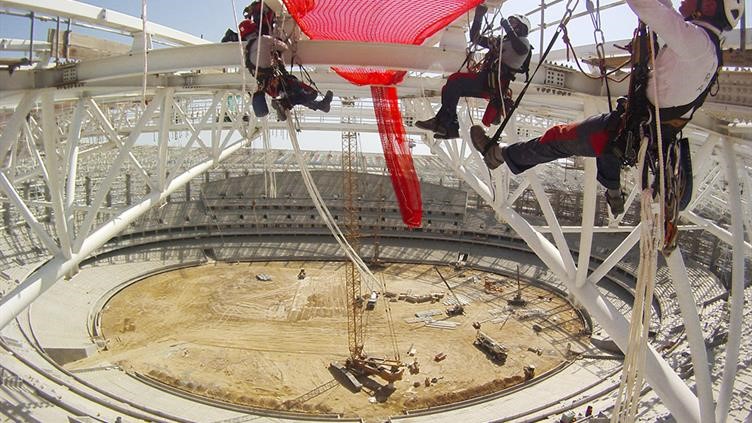A report from a UK parliamentary group makes four recommendations to reduce the overall number of falls related to work at height, the cause of one in four workplace fatalities.
Although the UK has consistently had some of the lowest workplace fatality and serious injury rates in the European Union, data from the Health and Safety Executive (HSE) shows that 24% of those who died at work in 2017-18 did so as a result of a fall from height. During that period, 35 families in the UK have been devastated by the loss of loved ones who perished this way, and many more will have had to deal with life-changing injuries.
It was with these facts in mind that the All-Party Parliamentary Group (APPG) on Working at Height published Staying Alive, the fruits of a year-long inquiry. The APPG made four key recommendations and proposed two opportunities for further consultation.
The first recommendation is for an enhanced reporting system through the Reporting of Injuries, Diseases and Dangerous Occurrences Regulations (RIDDOR) 2013, but one that does not create extra burden for businesses. As a minimum, this system would record the scale of a fall, the method of the activity and circumstances.
Staying Alive concludes that “… one measure in particular that would assist industry attempts to improve practice would be enhanced inspection and reporting. There was broad consensus among respondents that this measure would help instruct, direct and encourage improvements in working at height…”
At present, there is a lack of reliable data that can be used to understand the root causes of falls from height. Yet this very data could inform the policies of government and businesses, trade association guidance, and regulations.
In response to Reclaiming Health and Safety for All, published in 2011 and known as the Löfstedt report, the HSE amended RIDDOR in 2013 to reduce the reporting burden on industry. As a result, it was no longer necessary to collect detailed information on the distances that workers fell.
On the basis of the adage ‘if you can measure it, you can manage it’, the collation of useful data is paramount
Between 1978 and 2002, the government used to collate accident data through the home accident surveillance system and the leisure accident surveillance system. The two linked databases held details of home and leisure accidents that caused an injury serious enough to warrant hospital treatment. However, in 2003, the government announced it would no longer fund the collection and publication of this data so, although hospitals may continue to collect the data, that relating to falls from height is not shared with industry.
On the basis of the adage “if you can measure it, you can manage it”, the collation of useful data is paramount. In addition, the burden on industry is not high (particularly when some information is required in any case). Without this vital information, it does appear that it will be difficult to gain further insight into the causes of work-at-height accidents.
The report’s second recommendation is to appoint an independent body, which would allow for the confidential, enhanced and digital reporting of all near-misses and accidents that do not qualify under RIDDOR. The data would be shared with the UK government and wider industry to inform occupational safety and health policy.
The third recommendation is extension of the Working Well Together – Working Well at Height safety campaigns to industries outside of the construction sector.
The final recommendation is an equivalent system to Scotland’s Fatal Accident Inquiry process to be extended to the rest of the UK.
Click here to access the APPG Report ‘Staying Alive’.















